- Home
- Thomas Keneally
Searching for Schindler Page 10
Searching for Schindler Read online
Page 10
Plac Zgody, Peace Place, was a short walk eastward, past Regina’s little museum. It was a backwater in 1981. But here in the ghetto days, as well as at the nearby Optima factory, people selected in the Aktionen were forcibly loaded onto trucks. In Plac Zgody forty or so years before our visit, each act of minor defiance by them caused an addition to the heap of corpses on the pavement.
Some thousands whom Oskar observed being collected for the transport that summer day in 1942 were, he discovered, gassed in carbon monoxide chambers at Belzec camp to the east of Kraków, or in specially designed Renault vehicles. Oskar found out about this extermination, it seems, as part of his work for the Abwehr, who wished to keep an eye on these improbable events. The gassing of people had begun, but its “camouflage name” was, even by early 1943 when the ghetto was finally liquidated, “Special Treatment” (Sonderbehandlung). The screening to separate people for extermination from those who could still labor was entitled Gesundheitsaktion—“Health Action.”
In Plac Zgody, I had heard from all the survivors I had so far interviewed, lay the pharmacy of Tadeusz Pankiewitz. He was a Gentile apothecary permitted to remain in the ghetto, and though increasingly deprived of drugs, he had served the Jews heroically. The pharmacy still stood in the square in 1981, a plaque on its wall to honor the man who would rush forth in the face of armed SS to try to treat those summarily shot in the ghetto’s roundups and last hours. Poldek said he had got to know the pharmacist Pankiewitz well, through his own journeys in and out of the ghetto. With his high Slavic cheekbones, Poldek could easily pass as a Gentile Pole and had been a frequent errand runner for the Judenrat, the Jewish Council, and for others.
One of Poldek’s reasons for moving in and out of the ghetto by crossing Plac Zgody and passing through the fanciful Arabian gate into Lwowska Street, where trams could be caught to central Kraków, was the creation by the Nazis of a new monetary unit banned to Jews. At considerable personal risk, he would carry the funds of ghetto individuals and organizations to town, where he would exchange them for the new, safer currency at as small a discount as he could negotiate with Gentile money-dealers, who were permitted to use both currencies. No wonder he was not scared of government exchanges and back-lane currency deals! I’d heard this from others—that Poldek was good at these tasks, which he pursued without wearing his Star of David and thus under pain of summary execution.
Poldek spoke with affection of a German policeman he used to meet on the gate, Wachtmeister Oswald Bosko, a devout Catholic in a way Oskar wasn’t, who would let food and medicines be smuggled into the ghetto without the necessity of a bribe. At a stage when people didn’t know whether their children were safer within the walls or out of them, Bosko let children be smuggled in and out, since they would face being shipped off or shot if they entered or left openly. Ryszard Horowitz, future renowned photographer, was smuggled in from a hiding place outside to join his parents, whom he was missing; his playmate Roman Polanski was smuggled out. Oswald Bosko would ultimately be arrested for his pro-Jewish activities, tried and executed. He has been honored by Yad Vashem in Jerusalem, yet poignantly there is no extant photograph of this decent soul.
We had nearly finished trawling the ghetto, drawing at every turn suspicious looks as Poldek dragged me into courtyards and along piss-streaked pavements. He pointed out such features as the old Polish Savings Bank, where people came to get the certificates they needed for their survival. He had not been issued a Blauschein once, and had nearly been sent off in a truck, purely because his then occupation, tutoring the children of Symche Spira, the self-important head of the ghetto police, was not considered essential.
If a prisoner survived the ghetto and its liquidation by the SS officer Amon Goeth, the next stage of the process was detention in the new camp of Plaszów. Plaszów was at the time in Kraków’s rural fringe, four miles southeast of the city on the road to Lwów. By 1981 it was still a huge, open acreage, though partially impinged upon by new houses. What the prisoners always called the commandant’s “villa” still stood, surrounded by the villas of his senior officers. On the drizzly spring day Poldek and I walked past them, they were occupied, of course, by Polish tenants again. In their ordinary stucco—in Hannah Arendt’s much publicized phrase—“the banality of evil” was still evident.
The core of what had been the camp was a vast field with, at one end, the encroaching city, and at the other the notorious old Austro-Hungarian hill fort which had once guarded the road to Lwów, a mounded enclosure nicknamed by locals Chujowa Górka, Prick Hill. In this screened-off place the executions of thousands of Poles and Jews were carried out. Slaughtered or buried in it were Jews found living under Aryan papers; members of the Jewish resistance, the ZOB, who had blown up a Wehrmacht and SS café, the Cyganeria in Kraków; Polish partisans, both Gentile and Jew; and those summarily executed by gunshot or hanging within the camp, such as Lisiek, Goeth’s house and stable boy, who was shot dead for supposedly mishandling Goeth’s saddle. When the Russians got close, sooner than the SS had calculated they would, many able-bodied guards and prisoners were employed to dig up the graves and burn the remains on pyres, a scene which, as the dead sat up and even seemed to dance in the flames, sent some people, including an SS NCO, temporarily insane. Poldek had been there, working like crazy to avoid a bullet, seeing the bodies gesticulate in the flames as he breathed through his rag mask and wept.
Nearby, on a low rise, stands a postwar monument of four giant sculpted figures, riven pieces of stone in stylized human form, to commemorate the victims. In these green fields enough agony occurred to make Plaszów a byword for cruelty, if it had not been for the fact that the SS had also devised and implemented the ultimate, the destruction camp, of which Auschwitz was the archetype.
Poldek was exceptionally sober and undemonstrative as he showed me where the Ukrainian barracks were; the Puffhaus—brothel—for the SS; the women’s camp; the men’s; the Appellplatz or parade ground where random executions also took place during roll call. I took photographs of everything, but they were not necessary. I can still bring to mind the camp plan, the green bed of the fort where the brave and the adventurous died, and the starkness of those part-fractured, soulful pillars of stone, the acid rain of Nowa Huta working a new chemistry upon them. The geography is still engraved on my brain by the force of the events I heard of there. I was astonished by Poldek’s capacity to revisit the place, to exercise distance, to be a solemn tourist to his own past misery.
When the SS closed down the Kraków ghetto and sent everyone either to labor camps (Zwangsarbeitslager), or to destruction camps (Vernichtungslager) for Sonderbehandlung, Schindler was given, as those who have read the book might remember, the option of placing DEF inside this new camp at Plaszów. Oskar’s fellow entrepreneur, Julius Madritsch, would locate his uniform factory inside Plaszów camp. Oskar had rejected the idea, not wanting to be under anyone’s close inspection, and that was why each day his workers were marched to Emalia in Lipowa Street, and—until Oskar put in his own barracks—came back under guard in the evening to the barracks of Plaszów.
We met for tea another of the child survivors of the Holocaust, Niusia Horowitz, Ryszard’s sister, who still lived in Kraków and was a beautician at the Hotel Europa. Her married name was Karakulska. It did not seem to be an irony to her to be working on the faces of the privileged and of tourists in a hotel which, during her enslavement, had been much patronized by the Nazis. But she was nervous about having to meet this stranger from the Antipodes, under the eccentric aegis of Uncle Poldek, and to have to talk about the ghetto and Amon Goeth’s Plaszów, and her weeks in Auschwitz, and the role of Herr Direktor Schindler in her family’s deliverance.
We drank tea in one of the many splendid cafés around the Rynek. Insofar as Poles and the remaining hundreds of Polish Jews were able, she had made a life for herself, but again, it was palpable in the delicate fidgeting of her fingers on the herbata glass that the children had suffered worst, found recall
most painful, and that although she said she wanted to give this interview, she was doing so through gratitude to Oskar, fear of Poldek, and perhaps clan solidarity with her parents and brother. An adult prisoner knew at least that those who were oppressing him were working within their own coherent if misguided picture of the universe. Even if, as in the case of Goeth, that coherent picture sanctioned random shooting of prisoners—a form of rifle practice and of keeping the inmates on their toes—the adult prisoner still knew what Goeth was getting at. The child prisoner was more radically disoriented by such events. They could not be absorbed. They could certainly not be interpreted.
Niusia and Ryszard Horowitz’s father, Dolek Horowitz, had been an important purchasing officer inside Plaszów camp, and was allowed to have his children with him. But as other children began to disappear, Niusia, his tall ten-year-old daughter who cut her fingers sewing bristles onto the backs of broomheads in the brush factory, kept seeing trucks arriving at the Austrian hill fort of Chujowa Górka, followed by a racket of guns firing, and was in a terrible mental state. So Dolek pleaded with Stern to get the family moved to Emalia, Oskar’s place. Niusia became one of those children who Schindler insisted must be retained in his camp because only their delicate fingers could polish the interior of his smaller-caliber artillery shells.
Poldek also took me to see his old anatomy professor, Dr. Lax, who lived in what Poldek called “an intellectual’s apartment from the 1930s.” In its way, since Hitler had as many Polish intellectuals shot as he could manage, the apartment was a museum of the period. It was spacious but dominated by somber Polish impressionists, and heavy-bound volumes of Polish and French literature and anatomy. Dr. Lax was tall and frail, a survivor both as a scholar and a Jew, and Poldek spoke to him with a rumble of reverence.
During the war, the secular Lax had seen no reason why young men should be arrested as Jews purely on the grounds of their having been circumcised. But the Gentile majority in Europe were not circumcised, and unless the circumcised male could produce a document proving circumcision on medical grounds, he was considered Jewish. Lax had himself organized a few such certificates but had also devised a method for lengthening the foreskin of secularized Jews who considered themselves Europeans, and thus felt they had every right to go on breathing as much European air as they needed. This method of Dr. Lax’s involved an often very painful sequence of foreskin stretching, which would have sounded funny had the life of individual young men not depended upon it. Sometimes tyrants do away with the necessity of satire by imposing absurdity themselves.
Lax had remained dangerously at large during the war, worked as a doctor with the partisans, survived, and had now come to the full honor of his old age. He had been involved not only with the forest partisans but with those who operated in town, terrorists in the eyes of the German authorities, who blew up a German forces cinema and bombed cafés used by the Wehrmacht and SS.
Still the spring sunshine seemed merely conditional, as if the earth’s default setting would remain rain and mist. The countryside to the west of Kraków still showed remnants of snow everywhere, and bare trees seemed under an edict not to bud as we journeyed through them. Owicim, the town from whose German-version name, Auschwitz, the camps took their sinister umbrella repute, seemed a normal place, with stores and coffee shops, a community refusing to be tied to or inhibited by its own unfortunate and unchosen associations. Indeed, to be fair, it’s hard to know, had they been sure of everything that was happening a few miles from town, and been shocked by it, what an ordinary citizen could have done about the camps. One could so easily succumb to that all-too-human denial which is an inherited gift of all members of the species.
Auschwitz 1, the first of the camps, was designed for Russian prisoners and political prisoners, and for medical experiments on children, twins and women. Hangings, detention of people in absurdly small spaces, and obscene medical examinations were the order of the day in this first camp, close to the villa of the commandant of the entire Auschwitz system, Rudolf Höss. It is the camp which carries over the gate in wrought iron the renowned improving adage ARBEIT MACHT FREI—Work Makes One Free. (It was from a barracks at Auschwitz 1 that the child Ryszard Horowitz, until then surplus to experimental requirements, was liberated at the end of the war.)
Auschwitz 2, also called Auschwitz-Birkenau, was a massive area, death’s anteroom for numberless Jews from Ruthenia to Greece to Paris. It was reached via a gate through which the trains arrived full from all over the Reich, and departed empty. This is the camp which above all plays on our imagination, for it was in Auschwitz 2 that, having found through experimentation the correct asphyxiant gas, the Nazis were able to produce death as an industrial outcome, and to attend to the greatest problem, the obliteration of the remains, in industrial ovens. Walking down the lanes of Auschwitz 2, one can feel the accidie, the operational ennui which produced the daily results. As in any factory, many of the SS workers were bored with the process and were driven, as happened in the famous scene in the book and movie Sophie’s Choice, to play games to relieve the monotony in this extraordinary place in which humans were reduced to a whisper from a chimney.
Huge Auschwitz 2 was largely demolished, and the gas chambers and ovens dynamited, as the Russians drew close, but there is enough material remaining to horrify. The railway itself, with its archway, would be used by Spielberg in the film that at this point no one but Poldek dreamed of, and is still capable of carrying a large locomotive and rolling stock. The huts were thin-walled, unlined and inadequate for winter. When one goes to the western end of the camp and descends the stairs into the chambers, it takes an effort to walk to the middle of the space. An irrational fear arises that the door might be closed and, through the nozzles in the roof, a vaporous death enter.
I found it hard to believe that those Schindler women I had met, those faces of familial normality, had been caught here in Auschwitz 2 in 1944 as potential oven fodder. As I would write, there were a number of versions of the story of how the Schindler women had survived the place and then been shipped out to Brinnlitz. Their rescue is universally attributed by former prisoners to Schindler. A number of male prisoners claim independently of each other to have approached Oskar when their womenfolk did not arrive in Brinnlitz. Some say he paid diamonds, others that he sent one of his better-looking secretaries to talk to and if necessary give herself to officials. That the women survived is assured. That Misia Pfefferberg and Leosia Korn, Manci Rosner and Niusia Horowitz, were rescued is a matter of fact.
We had a little time now to drive to the mountains and look over the Danube toward Oskar’s hometown, Svitavy—Zwittau—and the site of his long-vanished Brinnlitz camp. We decided we would need to come back later in the year, but the truth is that we never did. The writing of the book would begin under pressure of ingested tales, and claim all the coming months.
One morning in Kraków between two and three I was awakened by a knocking at the door of my room. I thought it might have been restless Poldek, with more information to impart. When I opened up, I found an exquisite and very drunken Polish girl, perhaps twenty-five years old, wrapped only in a blanket and otherwise apparently naked, asking for a light. It is likely she had been working from room to room. She didn’t look like an agent provocateur of the kind Poldek had warned me of. She could have modeled for a statue of Polonia, the nation, but a Polonia worked over by tyranny and vicious times. Yeats saw Ireland itself similarly, incarnated in his character Kathleen Ni Houlihan, a woman formerly beautiful but now misused and debauched. Of course, I did not think too deeply along these lines at the time. She was magnificent, whatever her purpose, but all too blatantly a victim. I hope it was virtue which made me send her away. In any case, out of mischief I gave her Poldek’s room number and told her he had a light.
This girl somehow became confused in my head with that anthem that was played each noon on Polish radio—one clear, melodic trumpet call originally played, at least according to legend, fr
om the steeple of St. Mary’s Church in Kraków, and stopped mid-note at the point that a Tartar arrow struck the trumpeter. This interrupted melody, a combination of unfinished business and violated spirit, was known as the Hejnal Mariacki.
Nine
* * *
The night was dank when we went to the airport at Kraków to catch our plane out of the Poland of fears and whispers, and to Vienna. Early in the afternoon I had asked Poldek about dumping some of our plentiful zloty. He had told me, “Don’t be a worrier. They won’t even ask us—they won’t make a fuss when they see my Orbis badge.”
But having arrived in the dimly lit terminal we ran into exactly the trouble I had feared, and Poldek’s Orbis badge proved, for once, inadequate protection. We were required to change our zloty back into U.S. dollars at the government exchange booth, and when we did so we had more dollars than were accounted for by hotel and food receipts. An official in a blue uniform to whom I presented my papers saw the difference and seemed very disturbed by us. He led us away from passport control, which lay between us and our exit to some happier land, and took us to a desk far off on the flank of the airport terminal, and into an office full of men in greenish paramilitary uniforms, some of them bearing semiautomatic weapons. The official assigned to us was one of the latter. His Kalashnikov strapped very martially to his chest, he began looking at our papers and passports. It has to be remembered that in 1981 such procedures and such publicly displayed arms were not common in the West, and were of their nature more alarming than they would be now. But Poldek seemed un-amazed. He whispered to me to get out my latest novel again, a copy I was taking to Moshe Bejski, Schindler’s former forger, now an Israeli Supreme Court justice.

 Confederates
Confederates Flying Hero Class
Flying Hero Class Gossip From the Forest
Gossip From the Forest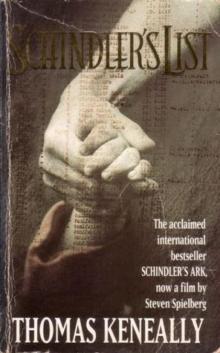 Schindler's List
Schindler's List Bring Larks and Heroes
Bring Larks and Heroes Australians: Flappers to Vietnam
Australians: Flappers to Vietnam The People's Train
The People's Train Crimes of the Father
Crimes of the Father A Family Madness
A Family Madness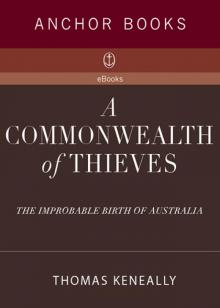 A Commonwealth of Thieves
A Commonwealth of Thieves Ned Kelly and the City of Bees
Ned Kelly and the City of Bees A River Town
A River Town Bettany's Book
Bettany's Book Blood Red, Sister Rose: A Novel of the Maid of Orleans
Blood Red, Sister Rose: A Novel of the Maid of Orleans Victim of the Aurora
Victim of the Aurora American Scoundrel American Scoundrel American Scoundrel
American Scoundrel American Scoundrel American Scoundrel Three Cheers for the Paraclete
Three Cheers for the Paraclete Australians: Origins to Eureka: 1
Australians: Origins to Eureka: 1 The Power Game
The Power Game The Chant Of Jimmie Blacksmith
The Chant Of Jimmie Blacksmith The Daughters of Mars
The Daughters of Mars Searching for Schindler
Searching for Schindler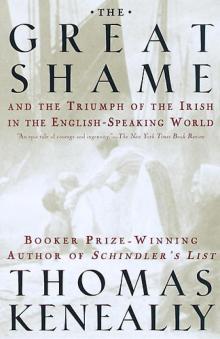 The Great Shame: And the Triumph of the Irish in the English-Speaking World
The Great Shame: And the Triumph of the Irish in the English-Speaking World Abraham Lincoln
Abraham Lincoln The Widow and Her Hero
The Widow and Her Hero Eureka to the Diggers
Eureka to the Diggers Shame and the Captives
Shame and the Captives The Survivor
The Survivor Jacko: The Great Intruder
Jacko: The Great Intruder The Book of Science and Antiquities
The Book of Science and Antiquities Homebush Boy
Homebush Boy The Playmaker
The Playmaker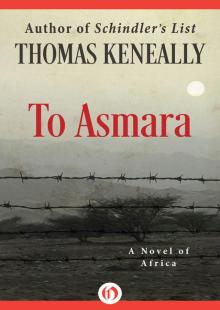 To Asmara: A Novel of Africa
To Asmara: A Novel of Africa A Woman of the Inner Sea
A Woman of the Inner Sea The Tyrant's Novel
The Tyrant's Novel Australians
Australians Schindler's Ark
Schindler's Ark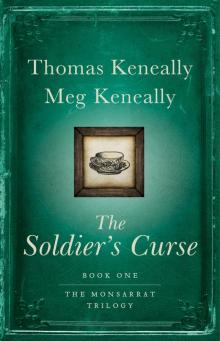 The Soldier's Curse
The Soldier's Curse Australians, Volume 3
Australians, Volume 3 Blood Red, Sister Rose
Blood Red, Sister Rose A Victim of the Aurora
A Victim of the Aurora The Unmourned
The Unmourned Australians, Volume 2
Australians, Volume 2 To Asmara
To Asmara